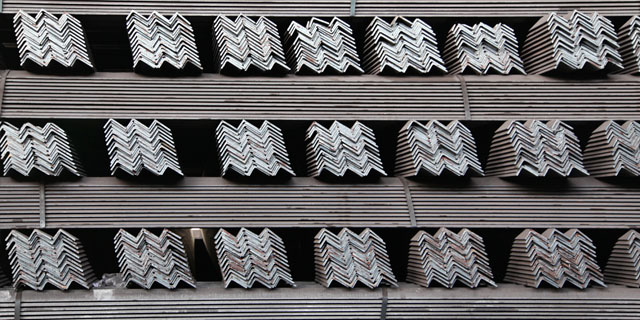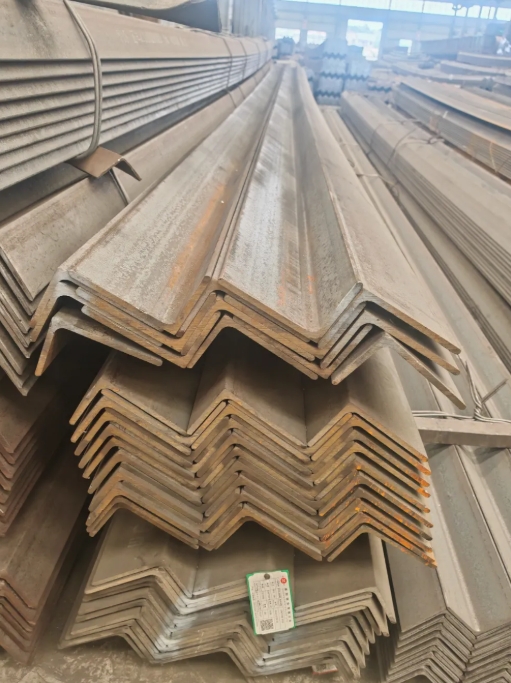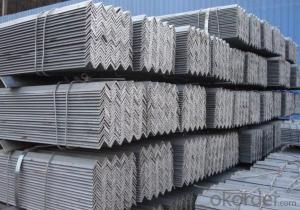ms unequal angle bar unequal angle iron black galvanized unequal angle steel
- Loading Port:
- Tianjin
- Payment Terms:
- TT OR LC
- Min Order Qty:
- 25 m.t.
- Supply Capability:
- 200000 m.t./month
OKorder Service Pledge
OKorder Financial Service
You Might Also Like
Specification
We supply ms equal & unequal angle bar, channel bar,jis channel, upn, steel i beam,h beam, ipe, ipeaa, steel sheet pile, flat bar, hollow section, tmt bar, wire rod, binding wire, wire mesh, hrc, CRC, gi coil, ppgi, roofing sheet, chequered coil & plates, medium plate, scaffolding systems, prefabricated container houses etc. Also for metal & steel processing.
If you are in the market for any steel products, please feel free to contact us.
ms unequal angle bar unequal angle iron black galvanized unequal angle steel
A36 Steel Angle is one of the most popular hot rolled, low carbon steel shapes used in manufacturing, fabrication, and repair projects. From trailers to truck beds, farm implements to construction equipment, steel angle has thousands of uses and applications. Its 90 degree angle shape adds strength and rigidity to any project for a lower price compared to other shapes and types of metal. It is easy to weld, cut, form and machine. Rcjs stocks hundreds of sizes of steel angle that you can buy online in ready to ship precut or mill lengths or you can order just what you need custom Cut to Size in small or large quantity at wholesale prices.






- Q: Can steel angles be used for framing in modular construction?
- Framing in modular construction can indeed utilize steel angles. These structural elements are widely employed in construction owing to their remarkable strength and versatility. Combining them through simple bolting or welding techniques allows for the creation of a robust framework, enhancing the overall stability and structural integrity of modular construction. Furthermore, steel angles exhibit exceptional durability and corrosion resistance, rendering them suitable for various environmental conditions. All in all, when it comes to framing in modular construction projects, steel angles prove to be a fitting selection.
- Q: Can steel angles be used for cable trays?
- Yes, steel angles can be used for cable trays. Steel angles provide structural support and stability, making them suitable for holding cable trays securely in place. They are commonly used in cable tray installations due to their strength and durability.
- Q: Are steel angles suitable for window frames?
- Yes, steel angles are suitable for window frames. Steel angles are often used in construction for their strength and durability, making them an ideal choice for supporting the weight of window frames. They provide excellent structural support, ensuring that the window frames remain stable and secure. Additionally, steel angles are resistant to corrosion, which is particularly advantageous for window frames that are exposed to external elements such as rain and humidity. Furthermore, steel angles can be easily fabricated and customized to meet specific design requirements, making them a versatile option for window frame construction. Overall, steel angles offer numerous benefits that make them a suitable choice for window frames in terms of strength, durability, corrosion resistance, and flexibility.
- Q: How do steel angles perform in terms of thermal conductivity?
- Steel angles have relatively low thermal conductivity compared to other materials, meaning that they do not easily conduct heat. This property makes steel angles less prone to thermal expansion or contraction, making them suitable for various applications where temperature fluctuations are a concern.
- Q: What are the typical lead times for steel angle orders?
- The typical lead times for steel angle orders can vary depending on several factors. Generally, lead times for standard steel angles that are readily available in stock can range from a few days to a week. This is because these standard sizes are commonly produced and kept in inventory by steel suppliers. However, if the steel angle order requires specific dimensions, finishes, or special requirements, the lead times can be longer. Custom or non-standard steel angles may need to be fabricated or sourced from mills, which can add additional time to the order fulfillment process. Lead times for such orders can range from a few weeks to several months, depending on the complexity of the specifications and the availability of the required materials. It is important to note that lead times can also be influenced by external factors such as market demand, production schedules, and transportation logistics. Therefore, it is recommended to communicate with the steel supplier or manufacturer to get an accurate estimation of the lead times for specific steel angle orders.
- Q: What are the common surface treatments used for steel angles?
- The common surface treatments used for steel angles are galvanizing, painting, and powder coating. Galvanizing is a process where a layer of zinc is applied to the surface of the steel angle to protect it from corrosion. This is achieved by immersing the steel angle in a bath of molten zinc or by applying a zinc coating using a specialized technique. Galvanized steel angles have a shiny, silver appearance and provide excellent corrosion resistance. Painting is another commonly used surface treatment for steel angles. The steel angle is typically primed and then coated with one or more layers of paint. This not only enhances the aesthetic appeal of the steel angle but also provides a protective barrier against rust and other environmental factors. Painting allows for a wide range of color options and finishes, making it a versatile choice for various applications. Powder coating is a dry finishing process where a fine powder, typically made of resin and pigment, is electrostatically applied to the steel angle's surface. The angle is then heated, causing the powder to melt and form a durable coating. Powder coating offers excellent resistance to scratches, chemicals, and UV rays. It is available in a wide array of colors and provides a smooth and even finish. The choice of surface treatment for steel angles depends on the specific application and the desired level of protection, aesthetics, and durability. Galvanizing is preferred in outdoor or corrosive environments, while painting and powder coating are commonly used for indoor applications or where a specific color or finish is desired.
- Q: How do you determine the required thickness of a steel angle for a specific application?
- To determine the required thickness of a steel angle for a specific application, various factors need to be considered. These factors include the load or weight that the angle will need to support, the length of the angle, the material properties of the steel being used, and any applicable safety codes or standards. Engineering calculations and analysis are typically performed to assess the structural requirements and ensure that the selected angle thickness can withstand the anticipated forces and stresses.
- Q: How do you protect steel angles from abrasive wear?
- There are multiple techniques available for safeguarding steel angles against abrasive wear. An effective approach involves the application of a protective coating or paint onto the steel surface. This coating acts as a barrier, preventing direct contact between the steel and abrasive substances, thereby reducing wear. It is crucial to select a coating specifically designed to resist abrasion, such as epoxy or polyurethane coatings. Another method entails utilizing rubber or polyurethane liners. These liners can be affixed to the steel angles, offering a cushioning effect and safeguarding against direct contact with abrasive materials. They find widespread usage in applications where steel angles are subjected to high levels of abrasion, such as mining or bulk material handling. In certain instances, it might be necessary to reinforce the steel angles with additional materials. This can be achieved by welding or bolting on wear plates or inserts composed of hardened substances like chromium carbide overlay or ceramic. These materials possess exceptional resistance to abrasion and can significantly prolong the lifespan of steel angles in abrasive environments. Regular maintenance and inspection also play a pivotal role in protecting steel angles from abrasive wear. By frequently examining the angles for indications of wear or damage, any issues can be promptly addressed, thereby preventing further deterioration. Additionally, implementing appropriate lubrication and cleaning practices can help minimize the adverse effects of abrasion on the steel angles. In conclusion, safeguarding steel angles from abrasive wear necessitates a combination of preventive measures, including coatings, liners, reinforcements, and regular maintenance. By implementing these strategies, the durability and performance of steel angles can be substantially enhanced in abrasive environments.
- Q: Can steel angles be used in high-temperature environments?
- Steel angles can be used in high-temperature environments, but their performance depends on the specific grade of steel being used. Some steel angles are specifically designed for high-temperature applications and can withstand extreme heat without significant distortion or structural failure. These high-temperature steel angles are typically made from alloys that have excellent heat resistance properties, such as stainless steel or nickel-based alloys. However, it is important to consider the operating temperature and duration of exposure when selecting steel angles for high-temperature environments. Prolonged exposure to high temperatures can still lead to some degradation of the material, including oxidation, reduction in mechanical properties, or even melting in extreme cases. To ensure the suitability of steel angles in high-temperature environments, it is recommended to consult with experts or engineers who have knowledge of the specific application and can provide guidance on selecting the appropriate grade of steel angle. Additionally, regular inspections and maintenance are crucial to identify any signs of degradation or wear caused by high temperatures.
- Q: How do you prevent welding distortion in steel angles?
- To prevent distortion in steel angles during welding, there are several strategies that can be implemented: 1. Ensure proper welding technique by correctly setting welding parameters, such as voltage, current, and travel speed, to control heat input. This prevents excessive heating of the steel angles, which can cause distortion. 2. Prepare the steel angles before welding by cleaning surfaces to remove dirt, oil, or rust. Also, bevel the edges of the angles to create a V-groove joint. This allows for better penetration and reduces the risk of distortion. 3. Temporarily hold the steel angles in place using tack welds before final welding. Strategically place these tack welds to evenly distribute stresses during welding and minimize distortion. 4. Determine the most suitable weld sequence for the specific joint configuration. Start welding from the center and progress outwards, alternating sides to balance heat input. This helps avoid localized overheating and subsequent distortion. 5. Use fixtures or clamps to hold the steel angles in place during welding. This ensures they remain in the correct position and minimizes distortion caused by movement or displacement during welding. 6. Consider preheating the steel angles before welding to reduce the risk of distortion. Controlled post-weld heat treatment may also be applied to relieve residual stresses and minimize distortion. 7. Adjust the welding sequence if the steel angles are part of a larger assembly. This involves welding in a specific order to balance shrinkage forces and reduce overall distortion of the assembly. By implementing these measures, welding distortion in steel angles can be effectively prevented, resulting in high-quality welds and ensuring the structural integrity of the fabricated components.
Send your message to us
ms unequal angle bar unequal angle iron black galvanized unequal angle steel
- Loading Port:
- Tianjin
- Payment Terms:
- TT OR LC
- Min Order Qty:
- 25 m.t.
- Supply Capability:
- 200000 m.t./month
OKorder Service Pledge
OKorder Financial Service
Similar products
Hot products


























